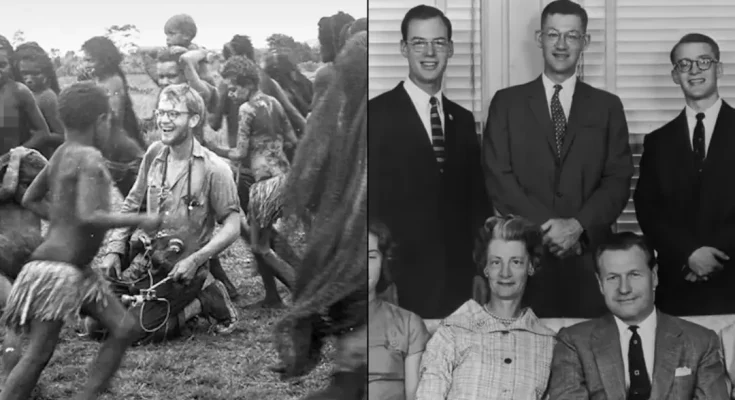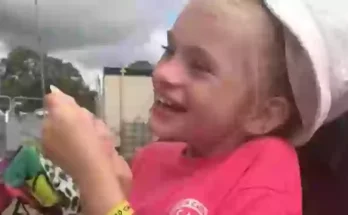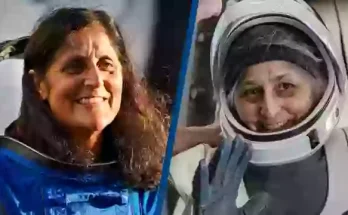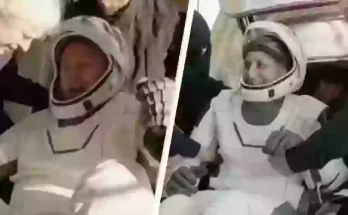Michael Rockefeller is said to have had a brutal end, but nobody knows for sure
When a man from one of the most prominent families in the world decided to go digging around in an unknown tribe’s territory, the worst was bound to happen.
But his disappearance has continued to remain a mystery for 61 years, and even his last words were debated.
Michael Rockefeller, the son of former US Vice President Nelson Rockefeller, was an avid world explorer, and became so obsessed over tribal art work that he decided to take the plunge and contact a tribe of cannibals.
In November 1961, the 23-year-old was on his second expedition of Dutch New Guinea (now West Papua), an Indonesian province on the island of New Guinea, and expected to be welcomed with open arms again like the first meeting.
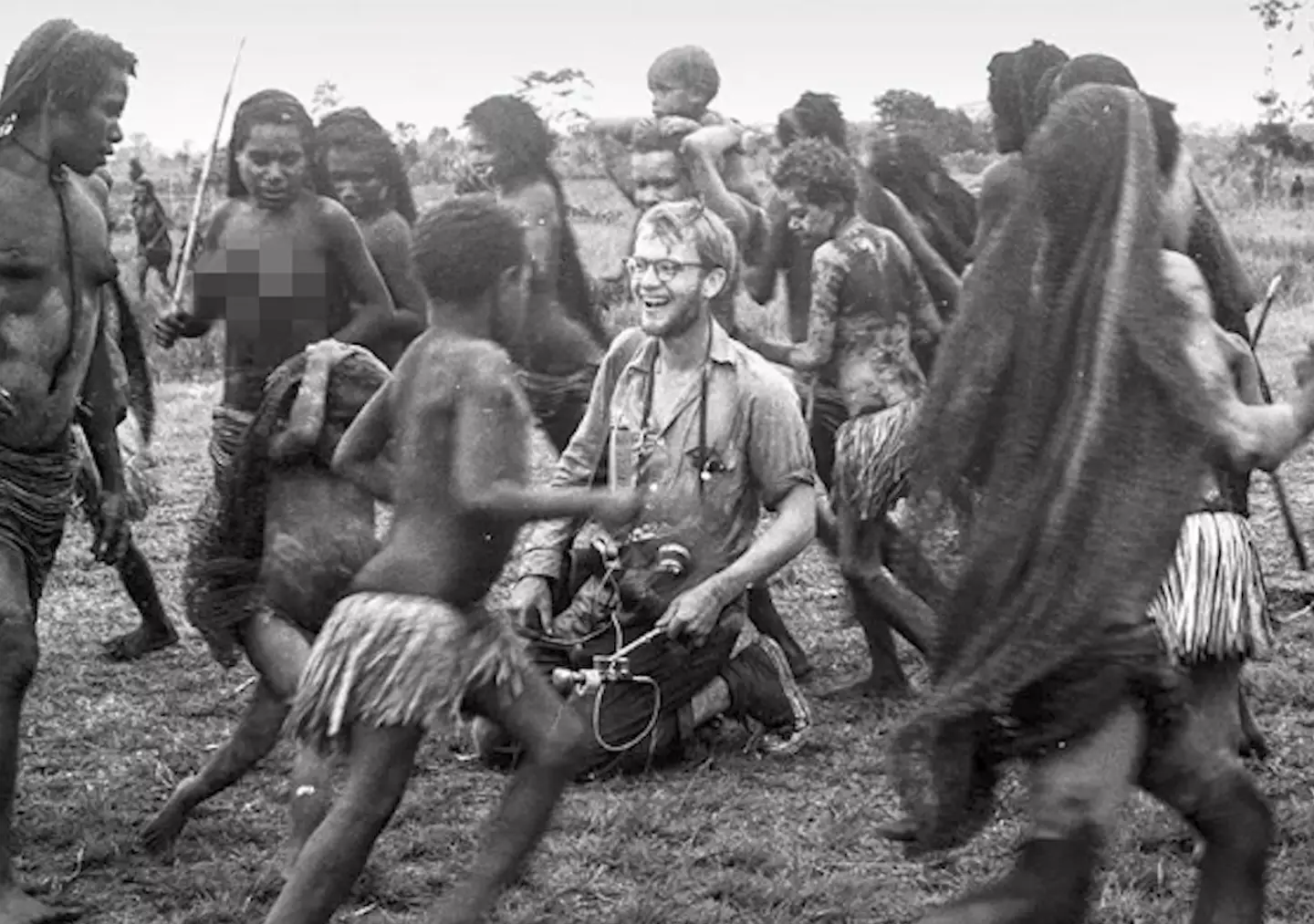
Michael Rockefeller was on his second expedition of Dutch New Guinea in 1961 when he disappeared (President and Fellows of Harvard University; Peabody Museum of Archeology and Ethnology)
Sailing along with anthropologist René Wassing, they were on the long journey to the southwestern part of the country, which is the Asmat region.
But in their 40-foot canoe, the pair capsized around three miles from the shore.
While Wassing was eventually rescued when floating in the Arafura Sea, Rockefeller was never seen again.
While his official cause of death was ruled as drowning, many believe that he washed ashore and was cannibalised by the Asmat tribe.
However, when images came out depicting the tribe years later, they told a very different story.
Around a decade after he mysteriously vanished, National Geographic sent a film crew to Asmat and they pictured dozens of naked tribesmen on rowing on boats.
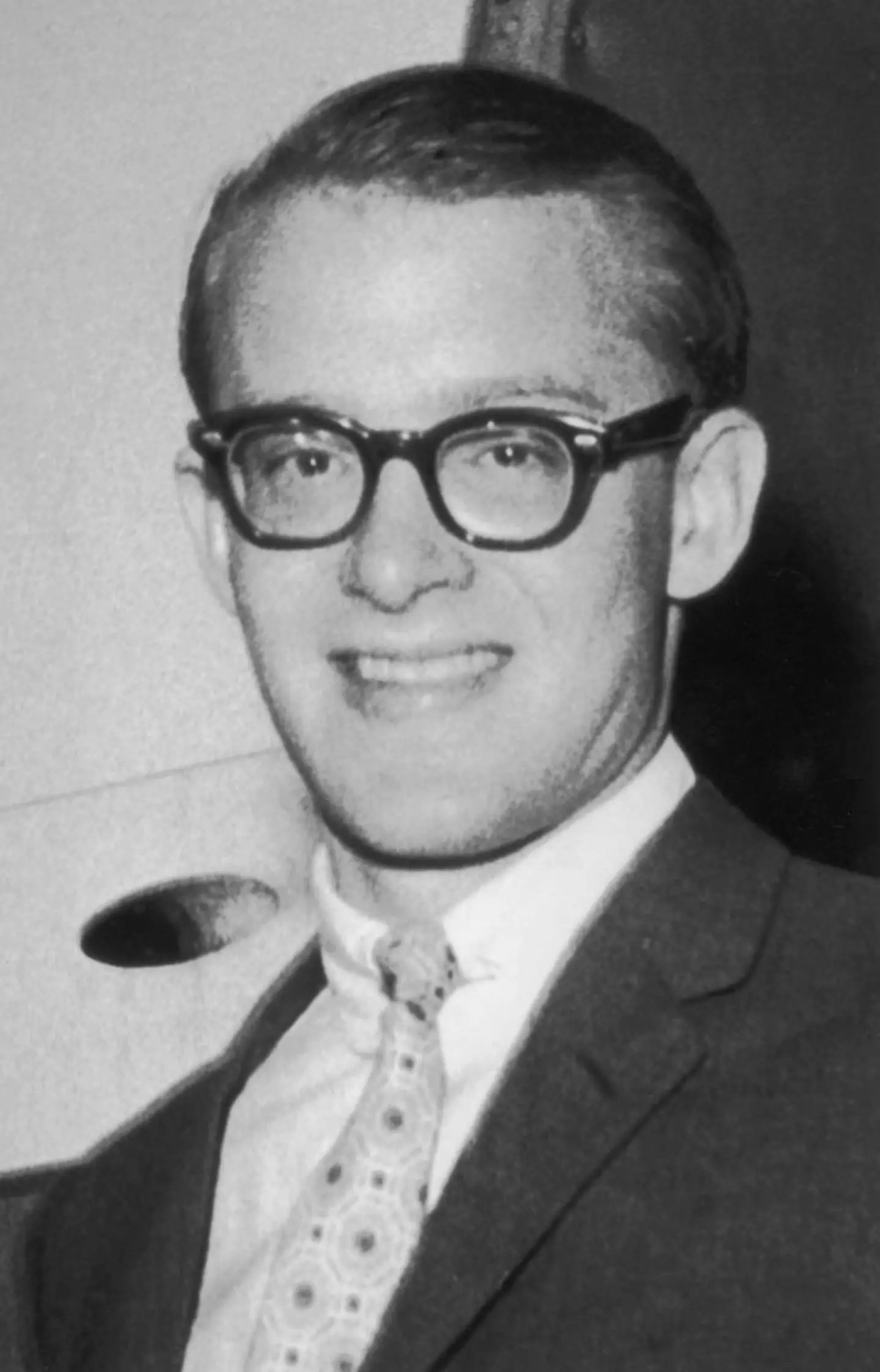
Nobody knows for sure what happened to the American explorer (T. Nielsen/Keystone/Hulton Archive/Getty Images)
And in the middle of all these bodies was one naked Caucasian man who bore a striking resemblance to Rockefeller.
Of course, many believed instantly that this was the missing American, but others were a little sceptical.
But that’s because an author who researched in depth what happened that day on the canoe has finally revealed the truth of what happened, and even the last words he ever spoke.
According to him, the last thing Rockefeller said before embarking on a 10-mile swim through a crocodile infested stretch of water was: “I think I can make it.”
Carl Hoffman, who even hired a private investigator and visited the tribe and police in the years after his death, wrote extensively on the topic of the disappearance.
While there’s a lot he doesn’t know about the picture the National Geographic took, he claims that he does know how Rockefeller died, according to those who lived in the area.
.png)
Rockefeller (top right) pictured with his family before his travels (Keystone/Hulton Archive/Getty Images)
Apparently, when Rockefeller swam to make it to land, he washed ashore in nothing but his underwear and was immediately met by familiar faces: the Otsjanep warriors.
But while Rockefeller was known to have been a respectful and kind man to the tribe, they weren’t in the mood for visitors, or so it seems.
So, when they saw him lying helpless on the shore, one of them allegedly stabbed him with a spear through his ribs and the rest cannibalised him.
While Hoffman can’t be sure why they decided to kill him that day, he believes it was in retaliation for an incident which saw Dutch colonists burn huts and murder high-ranking tribesmen just one year prior.
While we might never know what really went on, it’s a good theory.
Featured Image Credit: President and Fellows of Harvard University; Peabody Museum of Archeology and Ethnology / Keystone/Hulton Archive/Getty Images
